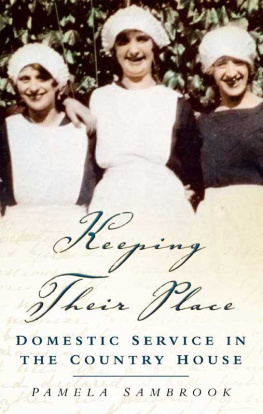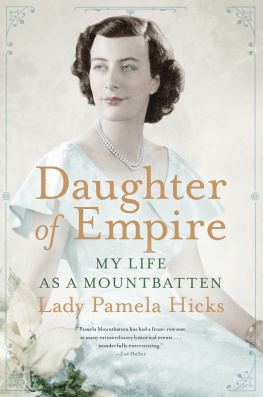Zenon Vantini
Zenon Vantini
From Grand Tour to Package Holiday
Pamela Sambrook
Paperback ISBN: 978 0 7188 9576 1
PDF ISBN: 978 0 7188 4837 8
ePub ISBN: 978 0 7188 4838 5
The Lutterworth Press
Click on the link above to see our FULL CATALOGUE
for more excellent titles in
Hardback, Paperback, PDF, ePub and Kindle!
Would you like to join our Mailing List?
Click here!
Enjoyed this book?
Review it on Amazon so others can too!
Click here!
This book is dedicated to the memory
of Marion Charlesworth (ne Sambrook),
1930-2019
T HE L UTTERWORTH P RESS
P.O. Box 60
Cambridge
CB1 2NT
United Kingdom
www.lutterworth.com
Paperback ISBN: 978 0 7188 9576 1
PDF ISBN: 978 0 7188 4837 8
ePub ISBN: 978 0 7188 4838 5
British Library Cataloguing in Publication Data
A record is available from the British Library
First published by The Lutterworth Press, 2021
Copyright Pamela Sambrook, 2021
Cover image:
Arrival of Napoleon I at the island of Elba in 1814.
An eye witness account says Zenon Vantini was present at this occasion, probably one of the young men to the far left of the picture. His father, ex-mayor of Portoferraio, was one of the black-cloaked figures. Courtesy of The State Hermitage Museum, St Petersburg, Russia. (see p.168)
All rights reserved. No part of this edition may be reproduced, stored electronically or in any retrieval system, or transmitted in any form or by any means, electronic, mechanical, photocopying, recording, or otherwise, without prior written permission from the Publisher ().
Sources and Acknowledgements
My interest in Zenon Vantini was first raised by research into the Sutherland Papers, archive of the Leveson-Gower family, deposited in the Staffordshire Record Office. In that collection, details of estate and household management figure very large in the correspondence records of the first decades of the nineteenth century, largely due to the fact that James Loch, the head agent, worked mainly from his office at home in London. From there, he sent out via the Royal Mail a deluge of instructions and enquiries to the familys sub-agents, clerks and servants. His staff at both ends of this correspondence were required to keep not only the letters received, but also office copies of replies sent, thereby leaving a complete and huge paper trail of both in and out letters. The staff of the County Record Office in Stafford could not possibly have been kinder or more efficient in the way they kept me supplied with great stacks of letters, all of which had to be worked through. I owe an enormous debt to their patience over the years. Family collections in other archives provided supplementary material the Sneyd family papers held in the Special Collections of Keele University Library and the Lord Dover Collection in the Northamptonshire Archives, Northampton.
The section on the road posting system and on early railway travel was originally sparked by a single primary source, the Sutherlands coachmans post book, which recorded the family travels to and from Dunrobin. In my experience, this tiny little book is an extremely rare survival.
The wider context was provided by a number of secondary sources, including books and articles written by Theo Barker, Dorian Gerhold, Simon Bradley, Christian Wolmar, J. Drake, Ian Petticrew and Jack Simmons (all listed in the bibliography); to all of these authors and historians I am greatly indebted. I also thank Mavis Smith for help with the letters of the Tollets of Betley.
Sources for the years when Vantini was contractor to the railway companies presented different problems. Even trade directories were of limited use, as Vantini became not a self-employed retailer but leaseholder or sub-contractor to much larger companies. On the other hand, his projects needed to advertise their services, so the main primary sources were found in newspaper archives accessed mainly via britishnewspaperarchive.co.uk , where both news reports and advertisements can be tracked down using newspaper, date or just a name. Legal announcements in France were found on the website for the French law newspaper, Gazette des Tribunaux , on the website gallica.bnf.fr. Legal documents, such as leases and partnership agreements relevant to England, were accessed from the digital catalogue of the UK National Archives, nationalarchives.gov.uk . Details are in the endnotes.
Using both English and French sources and spelling raised some problems, for example in the use of accents. Where the usage was entirely in English sources, French accents have been omitted (e.g. Cornelie) but in a French context, they have been kept.
As can also be imagined, entering the world of Napoleonic research, even within the limited range of the exile on Elba which was largely domestic rather than military, meant taking on an immense and complicated area of published reading which was entirely new to me. Finding information about Zenons immediate family proved not difficult: an internet blog written in 2002 by Gerard Hilbert (g.hilbert.chez-alice.fr/ Destins Glorieux, Destins Tragique ) gave me my first account of the wider family. Unfortunately, this blog page no longer exists but the website www.geneanet.org was particularly useful in filling in similar details and enabled me to track Vantinis parents and siblings on Elba at the end of the eighteenth century and the early years of the nineteenth.
Proceeding further was a different matter. There are obviously thousands of both contemporary and modern written works on Napoleon, which made the identification of those few which might be relevant to the Vantinis a daunting task. Though important to understanding the context of our research, most texts revealed little about the target individual, Zenon Vantini. Some effort was required to keep the focus on him rather than on his famous employer, yet at the same time to be mindful of the wider context.
Background researches began with the many contemporary accounts and later personal memoirs of close witnesses of Napoleons exile on Elba. These have to be treated with care as to their accuracy. Jealousies festered, bitter factions developed and legends were quick to grow. It was not surprising, given the extraordinary circumstances of 1814-15, that the island became a hotbed of gossip and scandal so that even contemporary writings are not necessarily accurate. Accounts of specific occurrences recorded by different people at the same time do not necessarily agree with each other. Amongst the most useful memoirs written at the time, or shortly afterwards, were those of three civilians: Andr Pons de lHrault, the manager of the Elban iron mines and friend of Napoleon; Louis-Joseph Marchand, Napoleons first valet (aged only 23 in 1814); and Louis-tienne Saint-Denis, his second valet. See bibliography for details.











